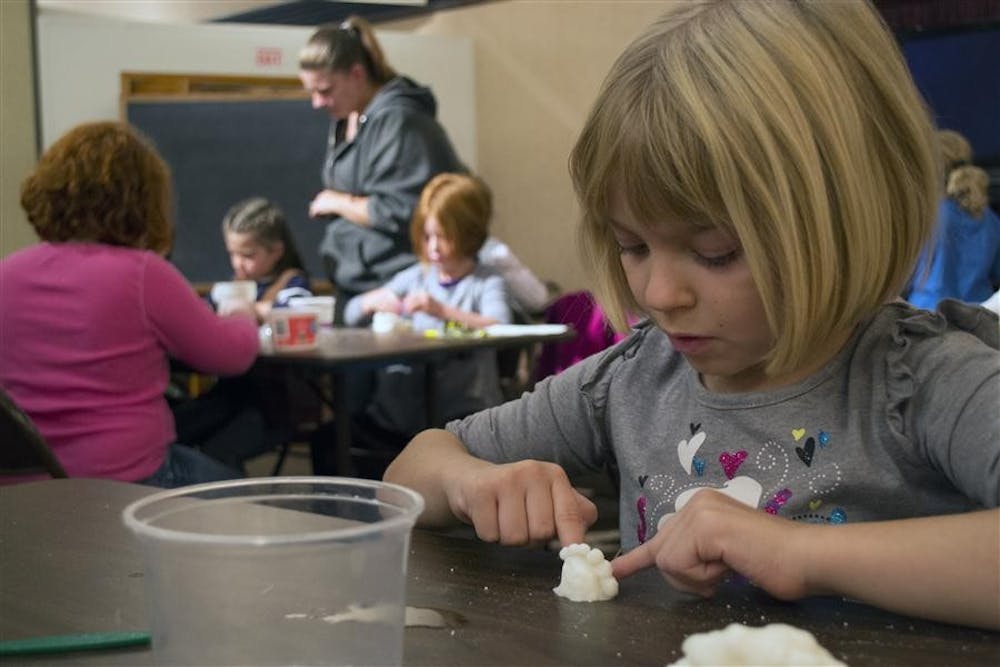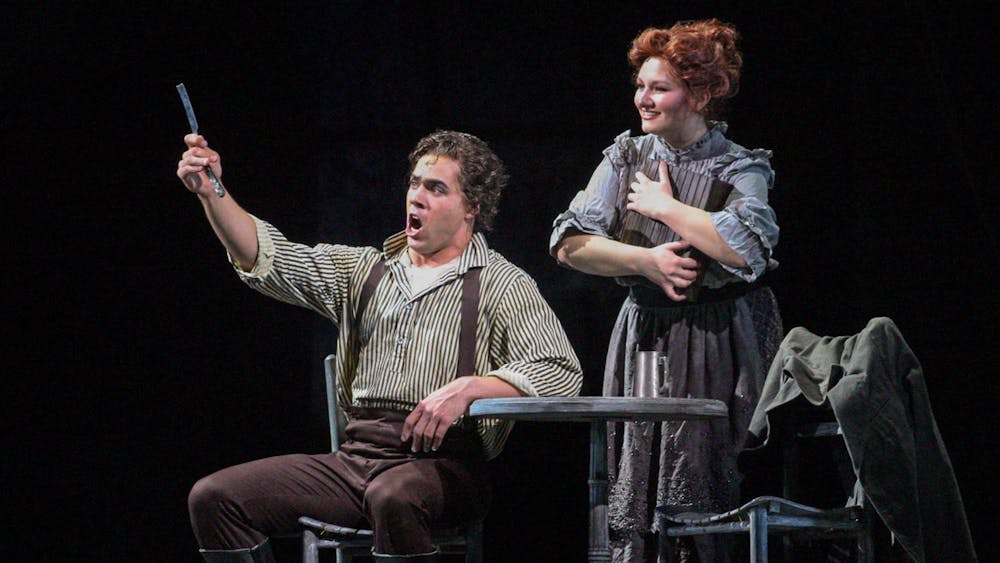A large group of excited girls sat at long tables in the Mathers Museum of World Cultures.
Sarah Hatcher, curator of education at the museum, spoke above the din to introduce Malcolm Mobutu Smith, a professor in the Henry Radford Hope School of Fine Arts.
“All right, here we go,” Hatcher said. “We’re very glad today to have you all here.”
The girls, all Girl Scout Brownies in second or third grade, attended the Sunday event to earn a badge.
A lecture on clay, a scavenger hunt and a make-your-own pottery session were all part of the event.
“We started this last fall,” Hatcher said. “The event was designed with Girl Scouts in mind, but it’s open to anyone who would like to come. It’s a relatively new series of programs for us. So far it’s been really well received.”
Hatcher said they coordinate one scout day every semester. For this semester’s event, she asked Smith if he would be available to speak to the group.
“Malcolm has actually used our collection as a point of inspiration for his students for a long time,” Hatcher said. “He brings his classes over, and he’s a great teacher. We thought he would be a wonderful voice for these young ladies to listen to.”
Smith prepared a small lecture for the group discussing the properties of clay and pottery.
“The relationship between all the IU entities and places like the museum, I’ve been involved with since I stepped through the door,” Smith said. “I started teaching here in 2001, and both through teaching and also other interactions, I’ve had cause to bring my students here.”
Smith said the museum has a mission to provide access to its archives.
“I’ve always had an affinity with that, so I’ve gotten to know the people that work here,” Smith said. “Because they know me, they asked me if I would be willing to volunteer for this.”
Before beginning his lecture, Smith placed a small piece of unfired clay and a piece of fired clay in water.
He asked the group to make a prediction of what would happen to the two different pieces. The girls predicted the fired piece would turn back into clay.
Smith opened his lecture with a question.
“Where does clay come from?” Smith asked.
A chorus of eager voices rose to answer his question.
“Water!”
“Mud!”
“Dirt!”
Allie Brooks, a second grader at Pinnacle School, sat in the front of the room, questioning and commenting on Smith’s presentation.
As Smith talked about different elements relating to clay and pottery, the word terra cotta came into discussion.
“Do you eat it?” Brooks asked.
Giggles echoed around the room.
Toward the end of his lecture, Smith showed the girls a piece of his pottery. He then licked the piece to demonstrate how clay soaks up water.
At the end, Smith showed the girls the two different pieces of clay he had placed in water at the beginning of the discussion.
The unfired piece had partially dissolved into mud, and the fired piece was unchanged.
Following Smith’s lecture, Hatcher showed the girls pieces of ancient Incan pottery and took them on a scavenger hunt.
Once the hunt was finished, the girls made their way back to the room in which they’d started. On their tables sat plastic bags filled with homemade clay mixture.
The girls were instructed how to make pinch pots before they were turned loose on the mixture.
Brooks sat rolling and folding the clay.
“I’m making a caterpillar,” Brooks said. “First, all you need to do is roll it like this. Then you make it into a shape. Then I kind of flatten it out. I make a big one for the head and little ones for the body.”
After working on the caterpillar for a little while, Brooks paused and took a long look at the piece in front of her.
“It’s going to be a masterpiece,” she said.
Girl Scouts make pottery at Mathers Museum

Get stories like this in your inbox
Subscribe





